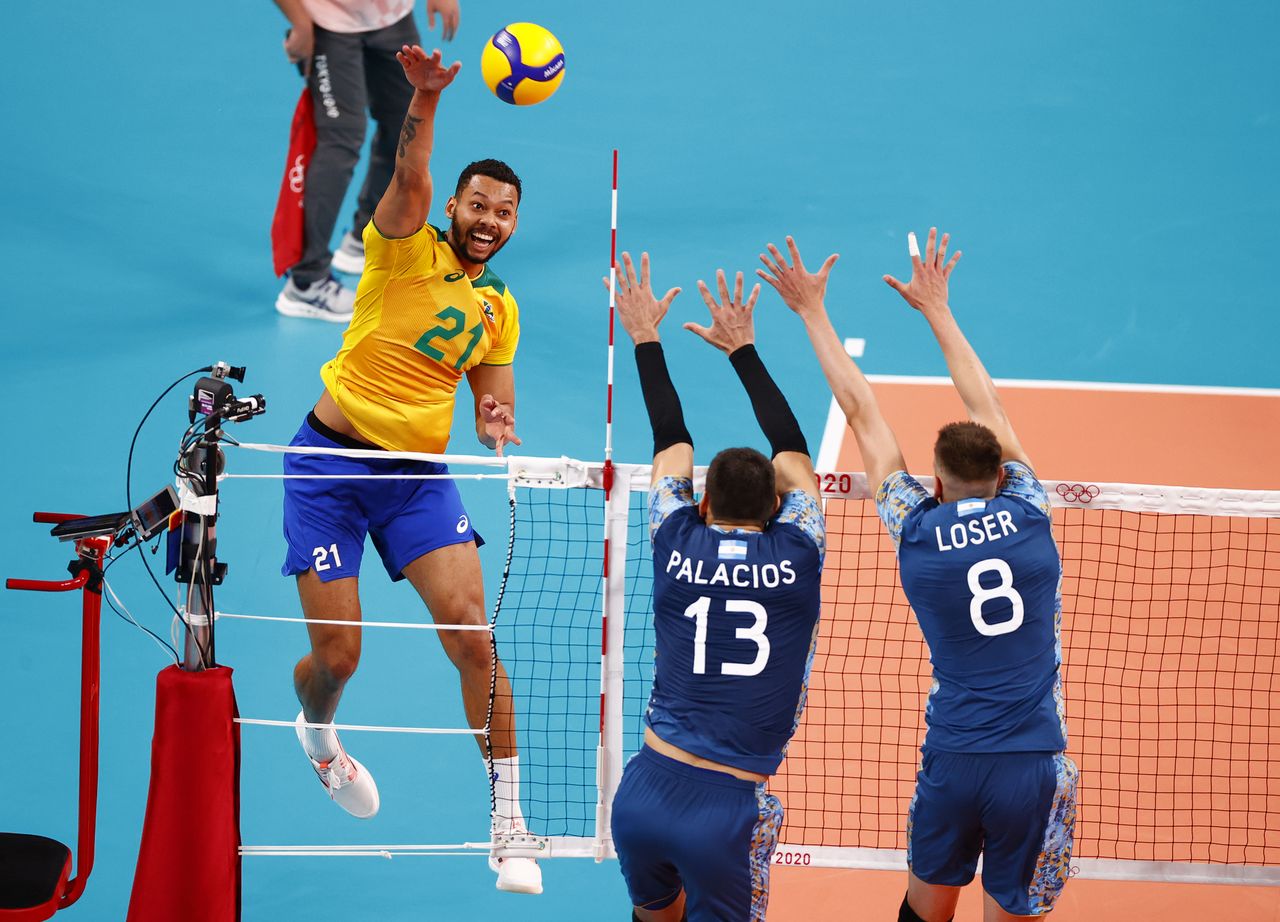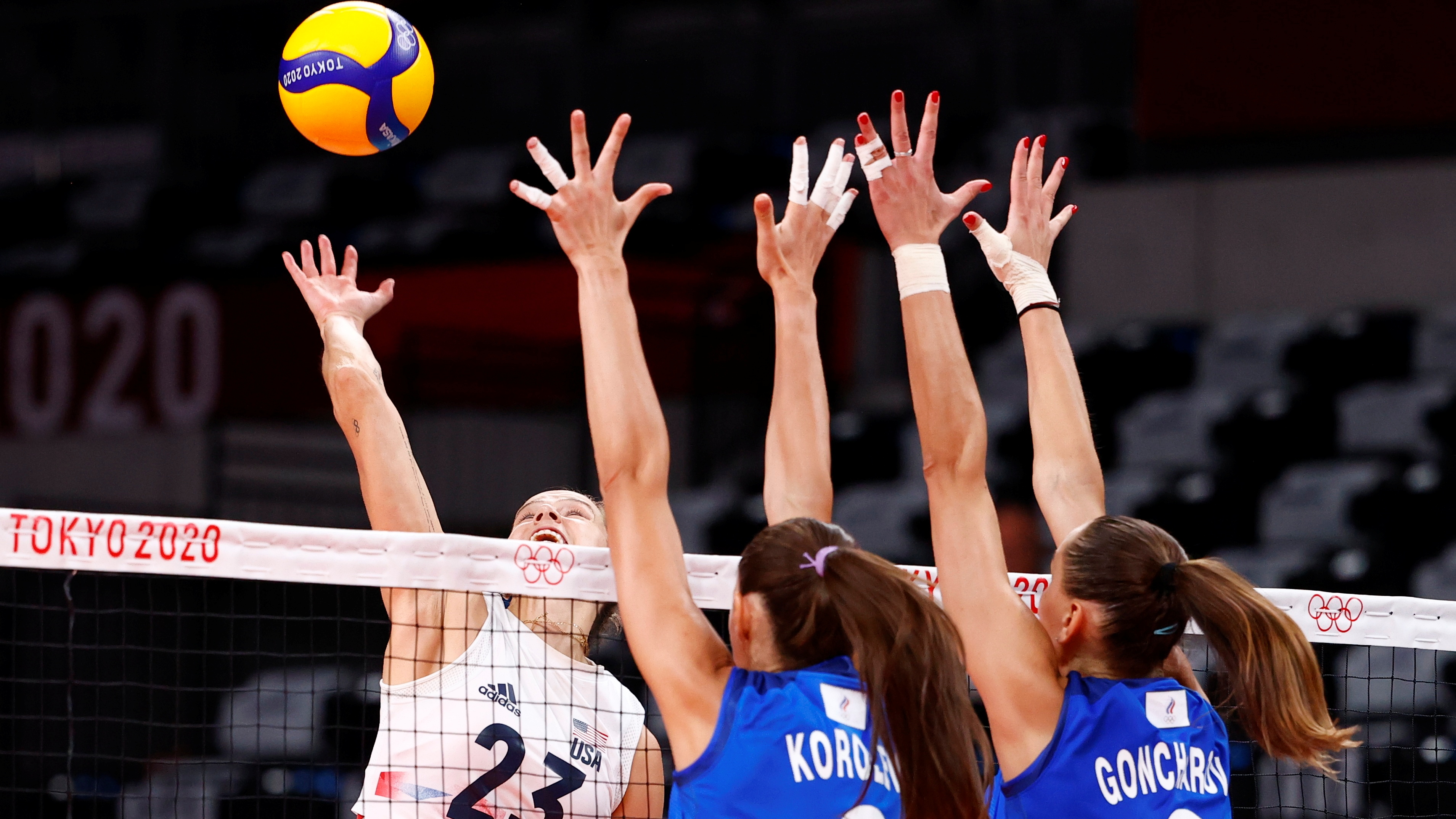History and Evolution of Olympic Women’s Volleyball

Women’s volleyball, a dynamic and captivating sport, has witnessed a remarkable journey since its inception. From humble beginnings to its prominent place in the Olympic Games, the sport has undergone significant transformations, showcasing the athleticism, skill, and determination of female athletes worldwide.
Origins and Inclusion in the Olympic Games
Volleyball’s origins can be traced back to 1895 when William G. Morgan, a physical director at the YMCA in Holyoke, Massachusetts, invented the game as a less strenuous alternative to basketball. Initially known as “mintonette,” the sport quickly gained popularity, with women actively participating from the start.
The International Volleyball Federation (FIVB) was founded in 1947, paving the way for the sport’s international recognition. Women’s volleyball made its Olympic debut at the 1964 Tokyo Games, marking a pivotal moment in the sport’s history.
Key Milestones and Rule Changes
The evolution of women’s volleyball has been shaped by numerous key milestones and rule changes that have refined the game and enhanced its appeal.
- The introduction of the libero position in 1998 revolutionized defensive strategies, allowing specialized defensive players to focus on receiving serves and digging attacks.
- The gradual increase in court size from 9×18 meters to 10×18 meters in 1998 provided more space for players to maneuver and execute complex plays.
- The implementation of the rally scoring system in 1998 allowed points to be scored regardless of which team served, leading to faster-paced and more exciting matches.
Evolution of Playing Styles and Techniques
Throughout its history, women’s volleyball has witnessed a remarkable evolution in playing styles and techniques.
- Early playing styles emphasized basic skills and teamwork, with a focus on consistent passing and setting.
- The emergence of powerful hitters and specialized blockers in the 1980s and 1990s transformed the game, introducing a more offensive approach.
- Modern volleyball is characterized by a blend of power, precision, and tactical sophistication, with players demonstrating exceptional athleticism and technical mastery.
Iconic Players and Teams
The history of women’s volleyball is adorned with legendary players and teams that have left an enduring legacy on the sport.
- Lang Ping, a Chinese player and coach, is widely considered one of the greatest volleyball players of all time. She led China to Olympic gold in 1984 and later coached the US women’s team to Olympic gold in 2012.
- Regla Torres, a Cuban player known for her powerful spikes and exceptional blocking skills, was a dominant force in the 1990s, leading Cuba to multiple Olympic medals.
- The Soviet Union women’s national volleyball team dominated the sport in the 1970s and 1980s, winning three consecutive Olympic gold medals from 1976 to 1980.
- The United States women’s national volleyball team has emerged as a powerhouse in recent years, winning Olympic gold in 2008 and 2012 and consistently challenging for top honors.
Notable Players and Teams: Olympic Womens Volleyball

The history of Olympic women’s volleyball is filled with incredible athletes who have left an unforgettable mark on the sport. From legendary players who dominated the court to teams that consistently challenged for gold, their contributions have shaped the game we know and love today.
Most Influential Players
The impact of these players extends beyond their on-court achievements. They have inspired generations of volleyball players, breaking barriers and paving the way for future stars.
- Regla Torres (Cuba): Known as the “Queen of Volleyball,” Torres is considered one of the greatest players of all time. Her powerful spikes and exceptional blocking skills helped Cuba dominate the sport in the 1990s, winning Olympic gold in 1992 and 1996. Her athleticism and leadership qualities made her a true icon for the sport.
- Misty May-Treanor (USA): Partnering with Kerri Walsh Jennings, May-Treanor became a dominant force in beach volleyball. Together, they won three consecutive Olympic gold medals (2004, 2008, 2012), showcasing exceptional teamwork, athleticism, and strategic brilliance. Their success helped popularize beach volleyball worldwide.
- Kim Yeon-koung (South Korea): Renowned for her powerful spikes and exceptional athleticism, Kim Yeon-koung is considered one of the best attackers in the world. Her contributions have led South Korea to multiple Olympic appearances and podium finishes, including a silver medal in 2012.
- Foluke Akinradewo (USA): A dominant middle blocker, Akinradewo was a key player for the USA team that won gold in 2012. Her powerful blocking and offensive prowess made her a force to be reckoned with on the court.
Playing Styles of National Teams
Each national team brings a unique style of play to the court, reflecting their individual strengths and training philosophies.
- Brazil: Known for their aggressive and dynamic style of play, Brazil emphasizes powerful spikes and strong blocking. They have consistently been a top contender in international competitions, winning Olympic gold in 2008 and 2016. Their high-energy approach and skillful execution make them a thrilling team to watch.
- USA: The USA team is renowned for their well-rounded game, combining strong defense with a balanced offense. They are known for their strategic approach and adaptability, often employing multiple offensive options to keep opponents guessing. Their consistency and ability to perform under pressure have made them a perennial powerhouse in the sport.
- China: The Chinese team is known for their precise execution and strong defense. Their disciplined play and ability to control the pace of the game make them a formidable opponent. They have won Olympic gold twice, in 1984 and 2004, and have consistently been a top contender in the sport.
Top Teams, Olympic womens volleyball
The following teams have consistently been among the best in Olympic women’s volleyball, showcasing exceptional performance and historical achievements.
- USA: With six Olympic medals, including three gold, the USA has been a dominant force in women’s volleyball. Their consistent performance and strategic approach have made them a team to fear in every tournament.
- Brazil: With four Olympic medals, including two gold, Brazil has established itself as a powerhouse in the sport. Their aggressive style of play and talented roster have made them a consistent threat on the international stage.
- China: With three Olympic gold medals, China has a rich history of success in women’s volleyball. Their disciplined play and strategic approach have made them a formidable opponent for decades.
- Russia: With two Olympic gold medals and a strong history of success, Russia has consistently been a top contender in the sport. Their powerful attacks and solid defense have made them a force to be reckoned with.
Olympic Medal Winners
| Year | Gold | Silver | Bronze |
|---|---|---|---|
| 1964 | Japan | Soviet Union | Poland |
| 1968 | Soviet Union | Japan | Poland |
| 1972 | Soviet Union | Japan | East Germany |
| 1976 | Japan | Soviet Union | South Korea |
| 1980 | Soviet Union | East Germany | Bulgaria |
| 1984 | China | USA | Japan |
| 1988 | Soviet Union | Peru | China |
| 1992 | Cuba | Unified Team | USA |
| 1996 | Cuba | China | Brazil |
| 2000 | Cuba | Russia | Brazil |
| 2004 | China | Russia | USA |
| 2008 | Brazil | USA | China |
| 2012 | USA | Brazil | Japan |
| 2016 | Brazil | China | Serbia |
| 2020 | USA | Brazil | Serbia |
Strategies and Tactics in Olympic Women’s Volleyball

Olympic women’s volleyball is a dynamic and strategic sport, requiring a combination of athleticism, skill, and tactical brilliance. Teams employ a variety of strategies and tactics to outmaneuver their opponents and secure victory. Understanding these strategies is crucial for appreciating the intricacies of the game and appreciating the skill of the athletes.
Blocking
Blocking is a fundamental defensive tactic in volleyball, aimed at preventing the opponent’s attack from scoring. Players form a wall at the net, attempting to deflect the opponent’s spike. Effective blocking requires anticipation, timing, and coordination among the blockers. A strong block can demoralize the opposing team and disrupt their offensive flow.
Serving
Serving is the initial action in each point, and it can significantly influence the outcome of a rally. Players can choose from a variety of serves, including float serves, jump serves, and topspin serves, each with its unique characteristics and advantages. A strong serve can put pressure on the receiving team, forcing errors or disrupting their set-up.
Attacking
Attacking is the offensive cornerstone of volleyball, aiming to score points by directing the ball over the net and into the opponent’s court. Attackers utilize a variety of techniques, including spikes, tips, and dinks, to overcome the opposing block and deliver a powerful shot. Effective attacking requires precision, power, and timing, combined with the ability to anticipate the opponent’s defensive strategy.
Setting
Setting is a crucial aspect of volleyball, involving the precise placement of the ball for the attacker. The setter’s role is to control the flow of the offense and create opportunities for their teammates to attack. Effective setting requires anticipation, quick reflexes, and the ability to read the opponent’s defense.
Team Cohesion and Individual Skill
Success in Olympic women’s volleyball requires a blend of team cohesion and individual skill. Players must work together seamlessly, communicating effectively and trusting each other’s abilities. Individual skills, such as powerful spikes, precise setting, and strong blocking, are essential for success, but they must be combined with teamwork and strategic understanding to achieve victory.
Common Formations and Offensive Plays
Olympic women’s volleyball teams typically employ a variety of formations and offensive plays to outmaneuver their opponents. The most common formation is the 4-2, with four hitters and two setters. Offensive plays can include quick sets, high sets, and pipe attacks, each designed to exploit weaknesses in the opponent’s defense.
Diagram:
4-2 Formation
[Diagram illustration]
Key:
* S: Setter
* OH: Outside Hitter
* MH: Middle Hitter
* Libero: Defensive Specialist
Olympic womens volleyball – Olympic women’s volleyball is a thrilling display of athleticism and strategy, demanding both power and finesse. Just as the players strategize their movements on the court, you can strategize your home decor with a light blue Eames chair , a timeless design icon that adds a touch of sophistication and comfort to any space.
Much like the Olympic athletes, this chair embodies a classic yet enduring style, making it a perfect complement to your own personal game plan for a stylish and comfortable home.
Olympic women’s volleyball is a thrilling spectacle of athleticism and strategy. The intense rallies and powerful spikes are a testament to the players’ dedication and skill. Just like the contrasting colors of the red and blue chair represent a dynamic balance, the teams on the court showcase the interplay of power and finesse, ultimately culminating in a victory that reflects the collective effort of each player.
